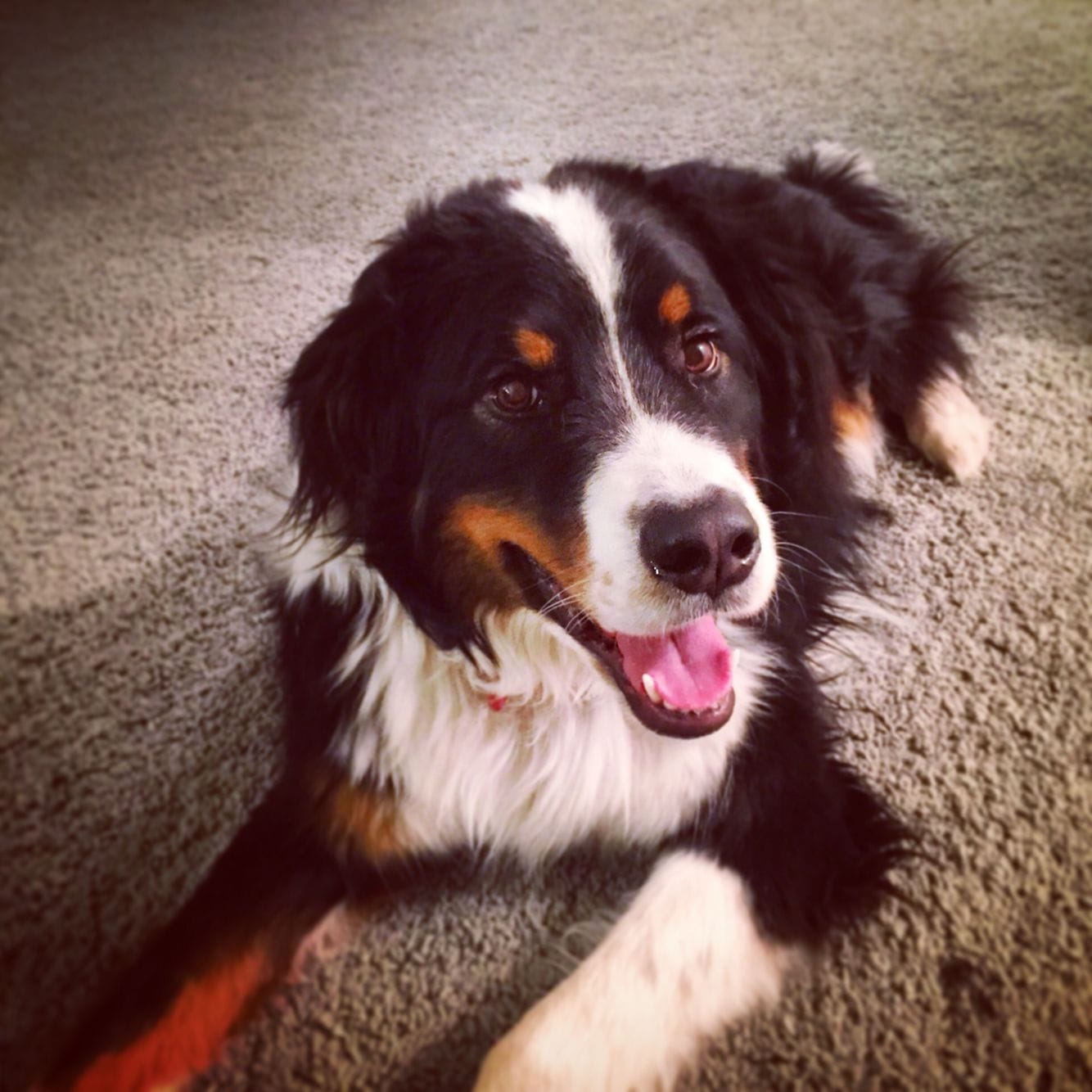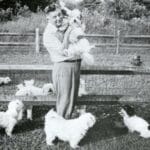Ever imagine a dog big enough to be your furry footrest, fluffy as a cloud, and with a heart as golden as its fur? Meet the Great Pyrenees Bernese Mountain Dog mix—affectionately known as the Great Bernese. This gentle giant blends two beloved breeds, resulting in a captivating companion. This comprehensive guide explores everything you need to know about the Great Bernese, from their unique appearance and temperament to their care and training needs. Whether you’re simply curious or seriously considering adding a Great Bernese to your family, this guide will provide valuable insights.
Majestic Appearance
Picture a fluffy cloud, perhaps tinged with brown and rust, gracefully moving through your home. That’s the closest visualization of a full-grown Great Bernese. These impressive dogs often weigh between 70 and 115 pounds, sometimes even more! Their height is equally striking, making them a truly majestic presence. Their thick, double-layered coat is usually a blend of the Pyrenees’ pristine white and the Bernese’s striking tri-color (black, white, and rust). However, like snowflakes, no two Great Berneses are exactly alike. Their coat can vary, leaning more towards white, showcasing more black and brown, or sporting a completely unique pattern.
Golden Heart, Giant Frame
Are these gentle giants as sweet as they look? Resoundingly, yes! They typically inherit the best of both parent breeds—the unwavering loyalty and protective instincts of a Great Pyrenees combined with the gentle, playful, cuddly nature of a Bernese Mountain Dog. The result? A loving, devoted companion and a natural watchdog. They are generally clever, deeply affectionate with their families, and usually great with kids. Early socialization is crucial, introducing them to new people, places, and animals as puppies to help them develop into well-adjusted adults. This can also help prevent potential shyness or fear-based aggression.
Caring for Your Gentle Giant
Owning a Great Bernese is like having a giant, furry teddy bear. That luxurious coat requires consistent attention. Regular brushing, perhaps several times a week, is essential to prevent mats, tangles, and manage shedding (though some shedding is inevitable). Moderate exercise is key. Daily walks, playtime, or gentle hikes keep them physically fit and mentally stimulated. Keep in mind their thick fur makes them prone to overheating, especially in warmer climates. Provide ample shade and fresh water, and exercise them during cooler parts of the day.
Training a Gentle Giant
While naturally sweet, their intelligence combined with a sometimes independent streak (inherited from the Pyrenees) makes training essential. Early and consistent training using positive reinforcement (praise and rewards) is usually most effective. Focus on basic obedience, leash training (vital for managing a large dog), and continued socialization for a well-behaved family member.
Health Considerations
Great Berneses are generally healthy. However, like any breed, they can be prone to certain inherited conditions like hip and elbow dysplasia (joint problems), bloat (a serious stomach condition), and certain cancers. Regular vet checkups and a healthy lifestyle (proper diet and exercise) are crucial for managing these risks.
Is a Great Bernese Right for You?
Before welcoming a Great Bernese, consider your lifestyle. Do you have a spacious home with a yard? Are you prepared for the commitment of a large breed, including increased costs for food, vet care, and dog sitters? Can you handle occasional barking (a Pyrenees trait)? If you’re active and seek a loving, loyal companion, a Great Bernese could be your perfect match. However, if you live in a small apartment or prefer a low-maintenance pet, this mix might not be the best choice. Finding the right dog for your circumstances is essential.
Finding Your Furry Companion
Ready for a Great Bernese? Research reputable breeders prioritizing health and well-being, or consider adopting from a giant breed rescue. While costs can be higher, the love, loyalty, and gentle giant charm are priceless.
How Big Do Great Pyrenees Bernese Mountain Dogs Get?
The Great Bernese, a mix of Great Pyrenees and Bernese Mountain Dog, typically reaches 25-32 inches tall and 80-120 pounds. However, individual size can vary based on parentage, diet, and exercise. Their thick, double coat requires regular brushing. They are generally gentle and affectionate but can be protective, necessitating early socialization and training. For more information on other intriguing creatures, explore the Gooty tarantula or the hognose snake diet.
Size and Growth
A Great Bernese typically stands 25-32 inches tall and weighs 80-120 pounds, inheriting the large stature of both parent breeds. Individual variations exist, with some individuals possibly leaning more towards one parent’s size.
Influencing Factors
Genetics, diet, and exercise influence a Great Bernese’s size. The parent dogs’ size is a key indicator. A balanced diet, especially during puppyhood, and regular exercise are vital for healthy growth.
Coat and Grooming
The Great Bernese sports a thick double coat, usually white with black or brown markings. Regular brushing is essential to prevent matting.
Temperament and Training
Known for a gentle and affectionate temperament, they also inherit protective instincts, making early socialization and training vital.
Can a Bernese Mountain Dog Cross with a Great Pyrenees?
Yes, a Bernese Mountain Dog and a Great Pyrenees can breed, creating the “Great Bernese.” This large breed (70-115+ pounds) blends gentle affection with protective instincts. Their thick double coat requires regular brushing. Temperament varies, influenced by both parents, making early socialization crucial. Be aware of potential health concerns like hip/elbow dysplasia, bloat, and certain cancers. Positive reinforcement training is recommended, and they are best suited for experienced owners with ample space.
Appearance
The Great Bernese is a large dog with a thick, double coat that comes in various color combinations (black, white, brown, and rust).
Temperament and Personality
They inherit a fascinating mix of traits—gentle and affectionate from the Bernese Mountain Dog and loyal and protective from the Great Pyrenees. Early socialization is key to develop a healthy and balanced temperament.
Energy Levels and Exercise
Energy levels can vary; some are relaxed while others are more energetic.
Grooming
Their luxurious double coat requires regular brushing to prevent matting and tangles.
Health Considerations
Be aware of potential health issues inherited from parent breeds (e.g., hip/elbow dysplasia, bloat, and some cancers). Finding a reputable breeder who prioritizes health testing is crucial.
Training and Socialization
Positive reinforcement methods work best for training these intelligent dogs. Early training and socialization are particularly important to manage their potential protective instincts.
Living with a Great Bernese
They require ample space, regular exercise, and a considerable amount of love. They are best suited for active families with experience owning large breeds.
What is the Temperament of a Great Pyrenees Mix?
Great Pyrenees mixes inherit a unique blend of loyalty, affection, and guarding instincts, making them devoted companions and vigilant protectors. Their temperament is a mosaic influenced by the other parent breed, resulting in a range of personalities. Early socialization and training are vital for shaping a well-adjusted Great Pyrenees mix. These mixes require regular grooming due to their thick coats, and exercise needs vary depending on the mix.
Parent Breed Influence
The Great Pyrenees are known for being loyal, protective, independent, and gentle with their family. The other parent breed, whether a Bernese Mountain Dog (calm, good-natured), a Labrador Retriever (energetic, friendly), or another breed, contributes additional traits.
Temperament Traits of Great Pyrenees Mixes
Common traits include loyalty, affection, protectiveness, and intelligence. Variations occur depending on the other parent breed, influencing energy levels, playfulness, and trainability.
Socialization and Training
Early socialization with other dogs and people is crucial. Consistent, positive reinforcement training helps channel their protective instincts appropriately.
Grooming and Care
These mixes shed heavily, requiring regular brushing and occasional bathing. Exercise needs and potential health concerns should also be considered. Remember, each dog is unique. Breed characteristics offer a guideline, but meeting the individual dog is important. Choosing a responsible breeder is paramount, and addressing potential anxieties related to protectiveness is also crucial for a successful match.
- China II Review: Delicious Food & Speedy Service - April 17, 2025
- Understand Virginia’s Flag: History & Debate - April 17, 2025
- Explore Long Island’s Map: Unique Regions & Insights - April 17, 2025
















